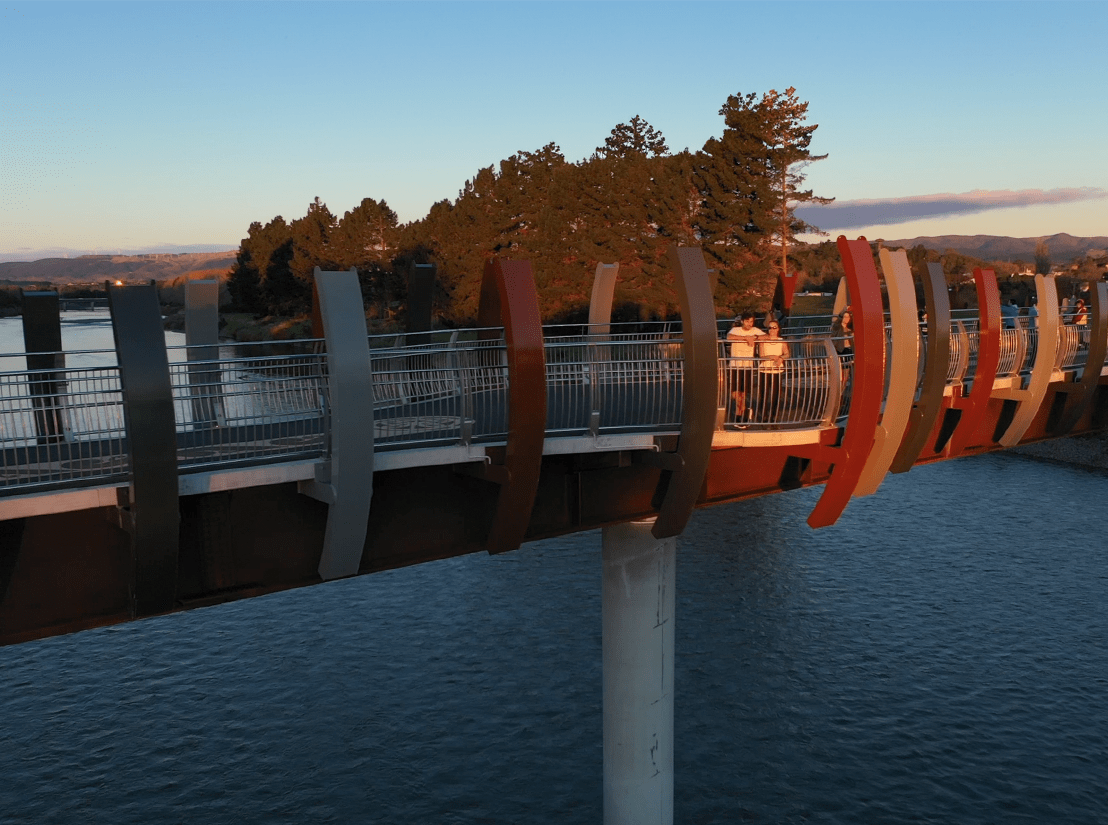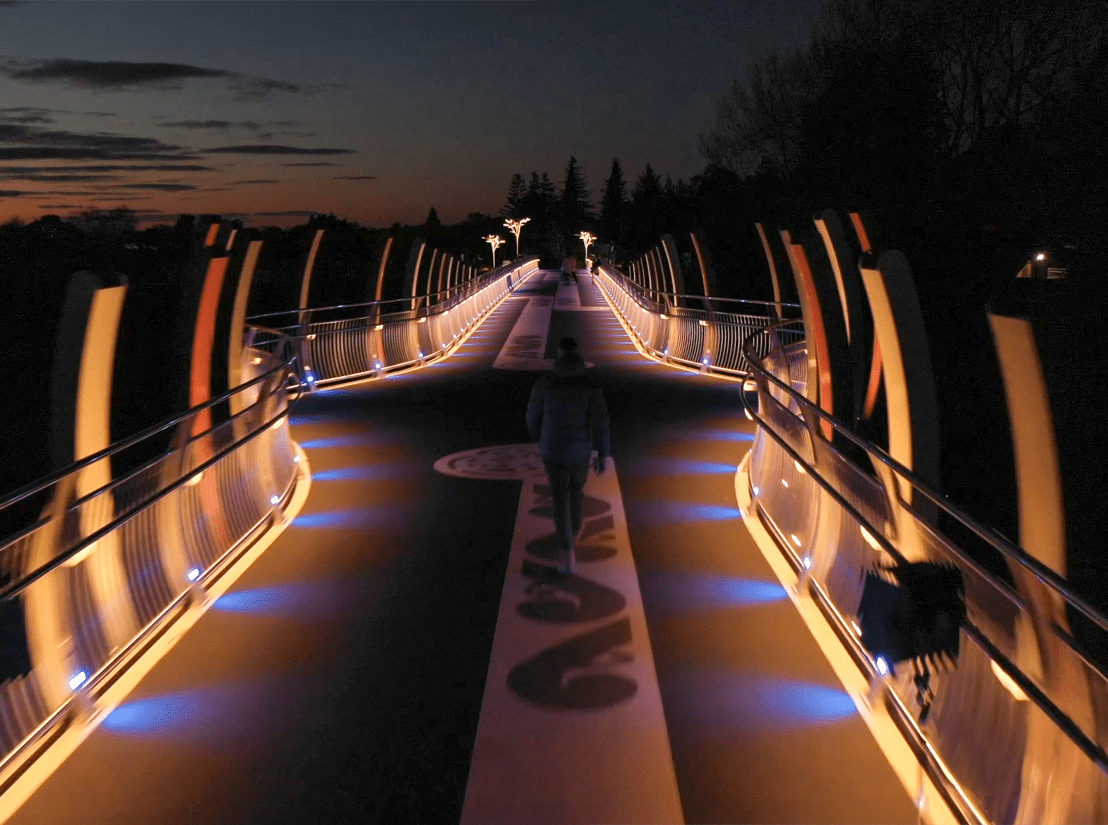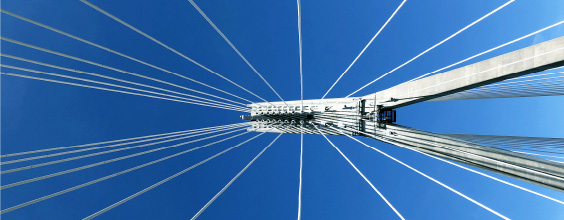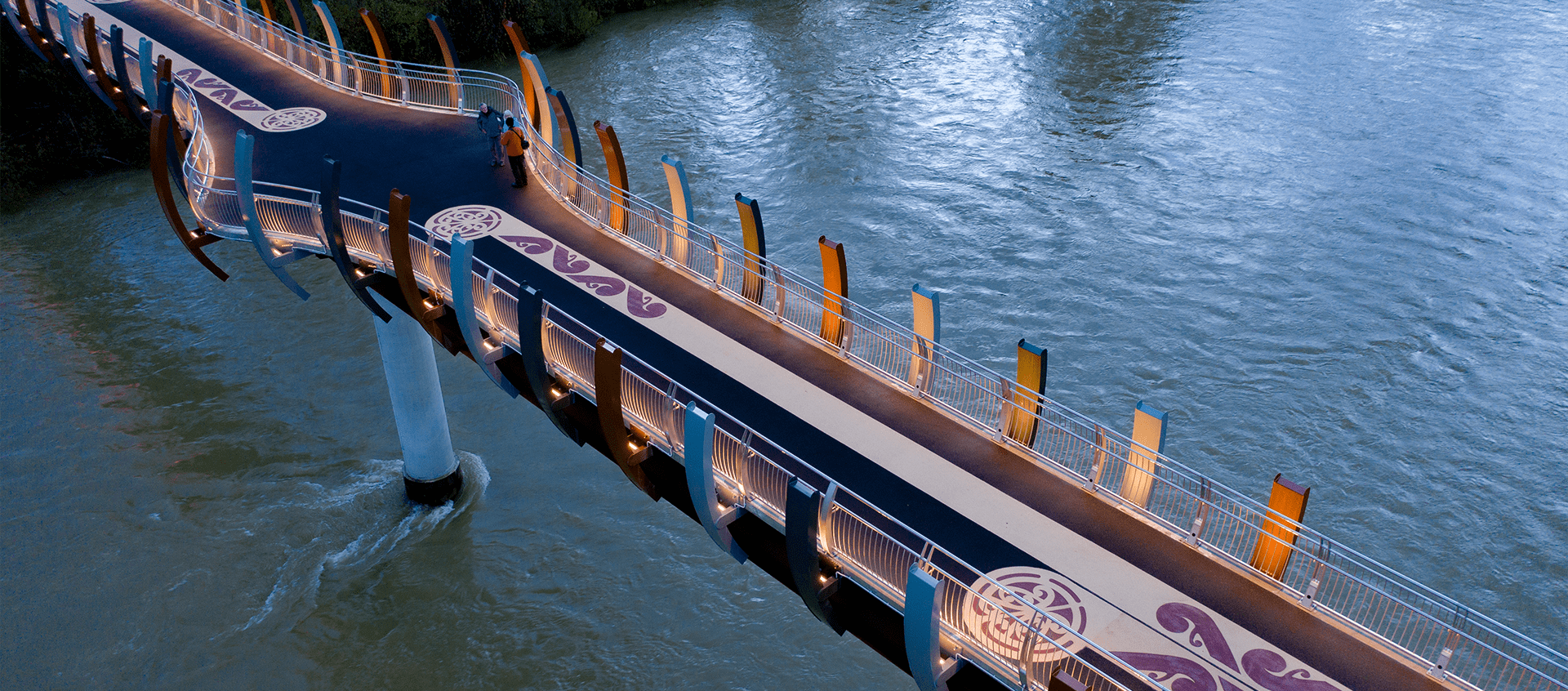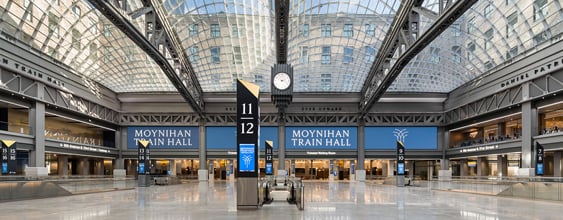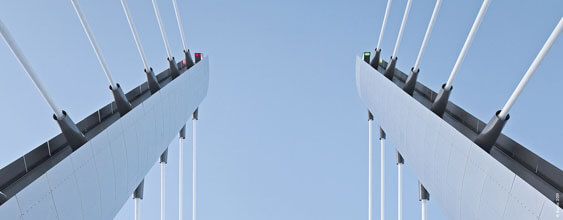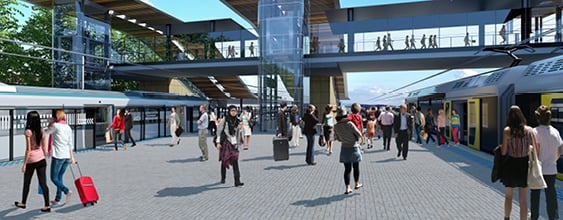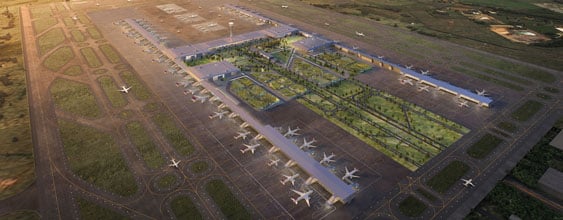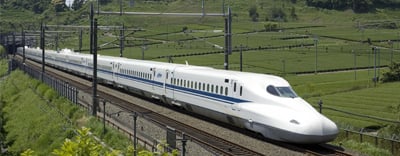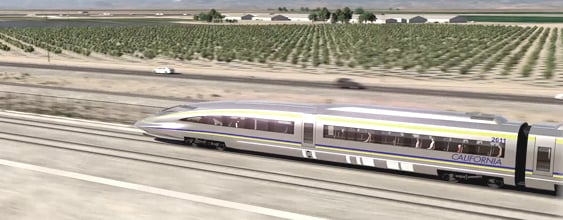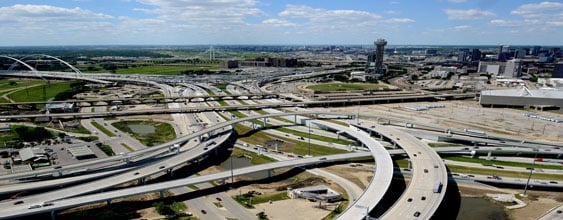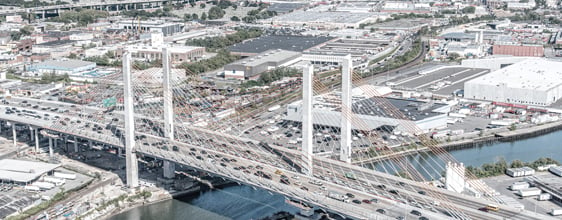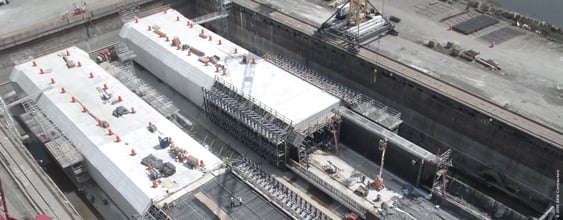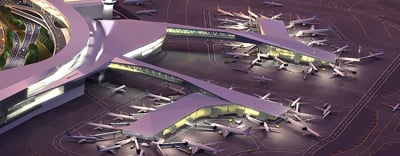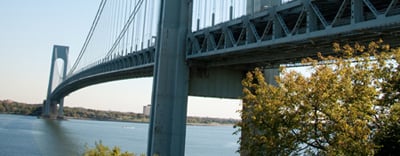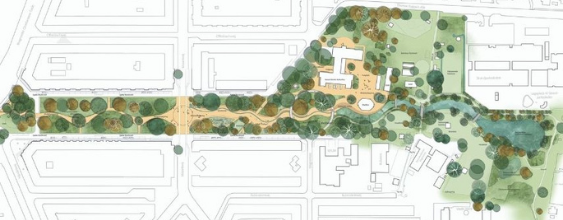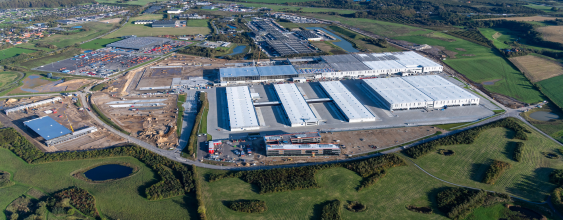In Palmerston North, New Zealand, He Ara Kotahi is more than a bridge – it’s a pathway that brings people together. Integrating Māori design principles, placemaking concepts and nature-inspired aesthetics with advanced engineering, the bridge has become a feature of the city as well as attracting 600,000 users in its first year.
A sense of place
If you’re familiar with the Karaka tree, you’ll know it’s unmistakeable; the dense canopy, dotted with orange berries in autumn, the elegant trunks once growing over 15 metres tall along the banks of the Manawatū River in Te Papa-i-Oea (Palmerston North).
The Manawatū River holds immense mana (spiritual authority and significance) for Rangitāne o Manawatū, playing a vital role in their cultural and spiritual identity. It also shapes the character and identity of the city, weaving together the natural environment and the lives of its people.
A congested city arterial road runs along and across the river and is noisy, busy and had a history of fatal and serious pedestrian and cycle crashes. This didn’t reflect the city’s goals to become recognised as vibrant, caring, innovative and sustainable.
It was time for an alternative crossing, incorporating respect for the landscape, a fresh integration of the past, present and future and a new approach to integrate the city with its surroundings.
Transforming engagement and environment
Palmerston North City Council asked us to lead this transformation, taking care of everything from where the bridge should be located, community engagement, environmental impact and assessment of environmental effects work (AEE), concept development and detailed design, and management, surveillance and quality assurance (MSQA).
We investigated three potential sites for an alternative walking and cycling crossing, before identifying a new fourth site, using behavioural science modelling and drawing on extensive engagement with local communities to predict the best location.
